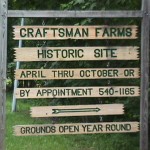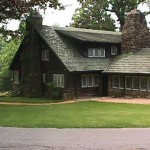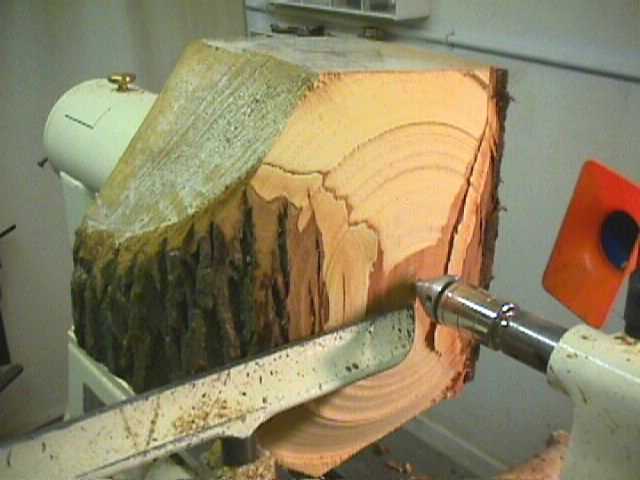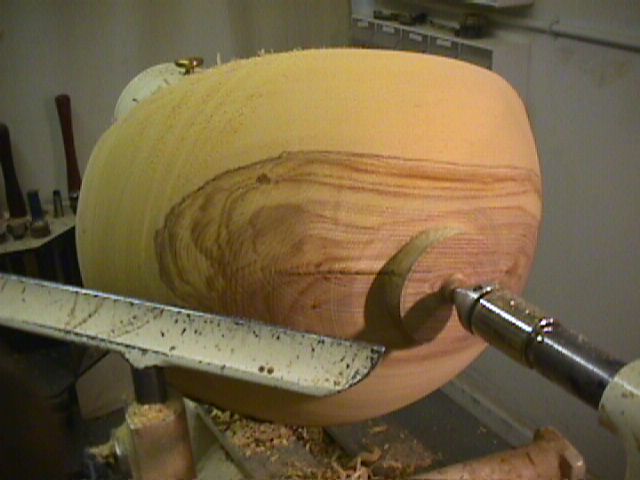A friend of mine Davey Willans did me a big favor last week and took me round to the Craftsman Farms on Route 10 where the recent storm had blown down a number of spectacular trees. There were some large Black Locust trees and also one very large White Ash tree.
The Stickley Museum at Craftsman Farms, located in and owned by the Township of Parsippany-Troy Hills, is the former home of noted turn-of-the-century designer Gustav Stickley, a major proponent of the “Arts and Crafts” home building and furnishing. The log house, built in 1911, is one of the most significant landmarks of the American Arts and Crafts movement, and the site, which consists of 26 acres of the original 650-acre tract, has been designated a National Historic Landmark. It is well worth a visit!
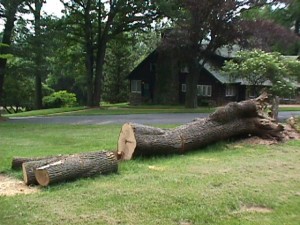 The White Ash tree was right in the front garden of the house and would clearly have known Gustav Stickley well and would have welcomed him with open limbs on his arrival at the farm in 1908. I am also sure that Stickley and his family must have become great friends with this magnificent specimen and sheltered on the lawn under its shade.
The White Ash tree was right in the front garden of the house and would clearly have known Gustav Stickley well and would have welcomed him with open limbs on his arrival at the farm in 1908. I am also sure that Stickley and his family must have become great friends with this magnificent specimen and sheltered on the lawn under its shade.
I cut a section and counted the annual rings and estimate that the tree sprouted 104 years ago, in 1896.
 My son Mark was a great help cutting up the logs and sealing all the end grains. In the picture you can see a lot of blanks courtesy of many friends including Davey Willans, Henri Noualhac, Rosemary Pickett.
My son Mark was a great help cutting up the logs and sealing all the end grains. In the picture you can see a lot of blanks courtesy of many friends including Davey Willans, Henri Noualhac, Rosemary Pickett.
It is great to have such a plentiful supply of different woods.
The white ash was the first to get onto the lathe and it was a real pleasure to turn. A fairly soft wood, especially in its wet state.
This large oval bowl had a large spigot turned on its base to fit the large gripped jaws on the Axminster Chuck. Even with this very strong hold the piece can flying out of the lath as the wood split off completely. Luckily no damage done and will need to find a new way to remount the piece.
 A great day of turning and a huge pile of shavings. It took about eight large garbage bin loads to clean out the workshop.
A great day of turning and a huge pile of shavings. It took about eight large garbage bin loads to clean out the workshop.
At least five nice large bowls turned and double bagged to dry. We will see in about 5 months time whether there has been any cracking. Hopefully they will all survive and the best will be finished and donated to the Craftsman Farms.
What the Woodworkers Guide has to say about White Ash
Characteristics: Most people probably know white ash quite well. They’ve hefted it, grasped it in their hands, and worked with it for hours. Anyone who has ever dug a hole with a spade, gathered leaves with a rake, or chopped weeds with a hoe has touched white ash. The tough, resilient wood leads hickory for handles on non-striking tools. Although white ash indeed classifies as utilitarian, it bests all woods in a sporting role.
Workability: You can use white ash for any woodworking project that you would red oak: chairs, tables, desks, and cabinets. Although durable to exposure from the elements, it won’t, however, weather as well as white oak in outdoor projects. Carvers and woodturners view white ash the same as red oak. Its hardness and coarse grain make it difficult to work.
Common Uses: Wooden baseball bats (still the mainstay in pro leagues) have always been made of white ash. Before man-made fibers, it was also the wood of choice for tennis rackets and skis. You’ll also find white ash as hockey sticks, polo mallets, oars and paddles, and playground equipment. Chair makers also prefer white ash due to its bending ease. And its workability, plus good looks, make white ash one of the top commercial woods in the furniture and cabinet industries.

